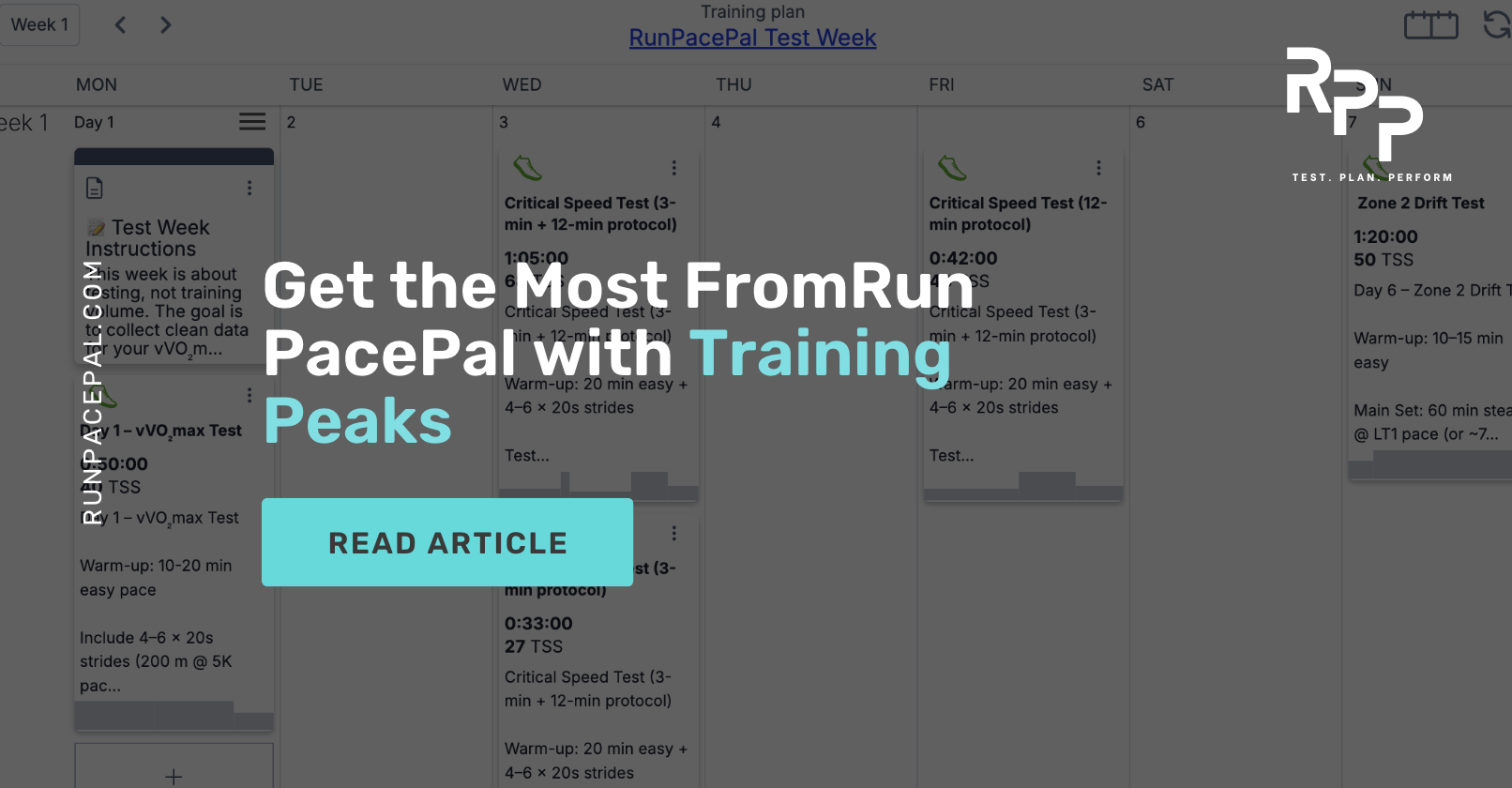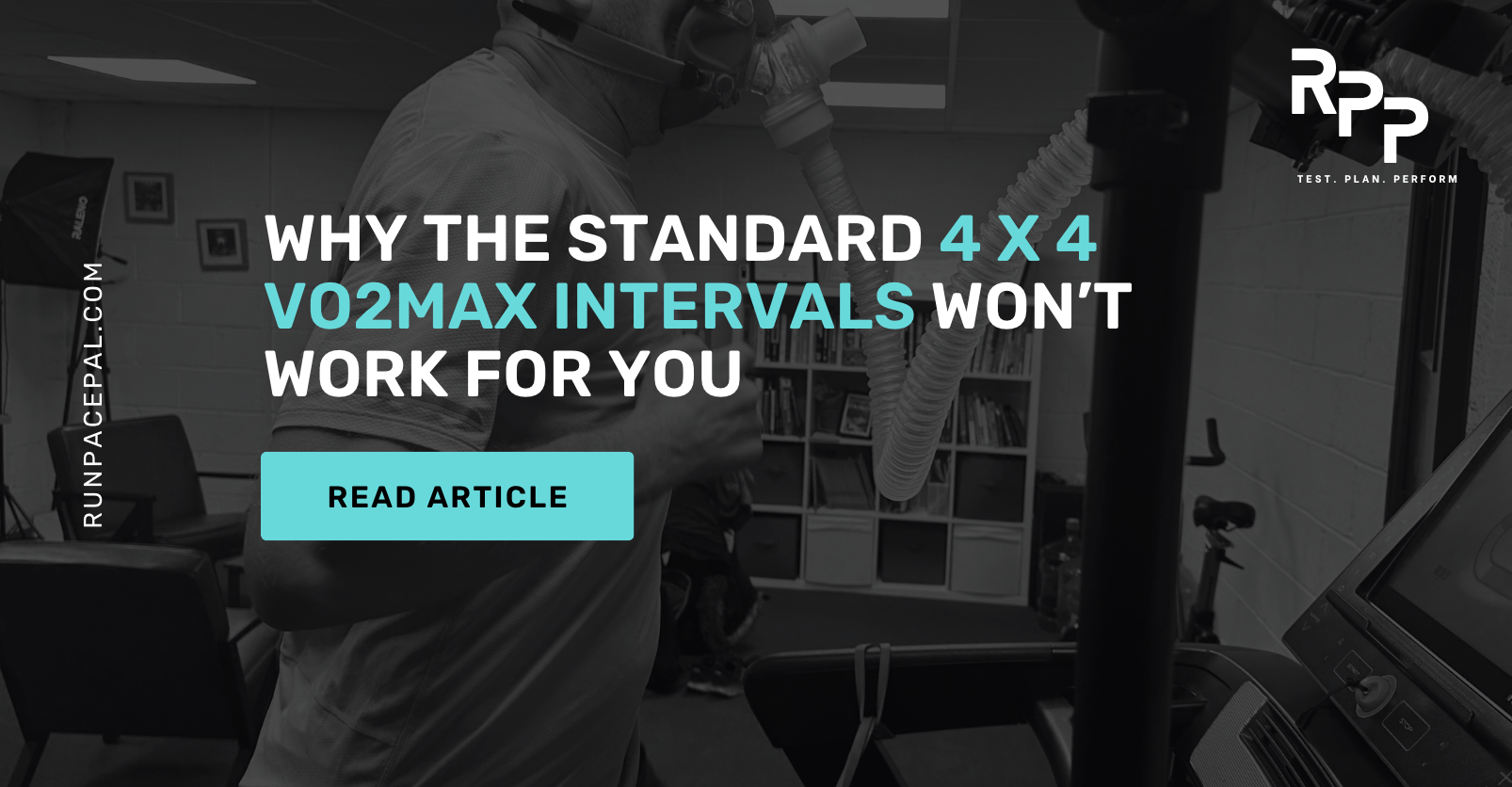How to Get the Most From Run Pace Pal
Whether you're chasing a new 5K PB, preparing for a marathon, or just want to train smarter, Run Pace Pal takes the guesswork out of running. By combining smart testing with physiology-based calculators, it shows you exactly how to pace, train, and progress. This post breaks down how to get the most from the app — and why doing the tests correctly matters.
Step 1: Test Correctly
The calculators in Run Pace Pal only work if the inputs are accurate. That means your test week is crucial. We recommend using the structured Run Pace Pal Test Week protocol on TrainingPeaks (free here).
What's included in the Test Week:
Day 1 – 6-Minute vVO₂max Test - Best sustainable 6-min effort → estimates your aerobic engine size.
Day 3 – 3-Minute Test
- Short all-out effort → part of your Critical Speed calculation.
Day 5 – 12-Minute Test - Longer max effort → combined with the 3-min test, this gives you Critical Speed (CS) and D′ (Turbo Battery).
Day 6 – Zone 2 Drift Test - A steady 60-min run at easy pace → measures aerobic efficiency.
📌 Tips for clean data:
- Use the same shoes, surface, and watch settings each time.
- Turn Auto-Pause OFF.
- Treat each effort like a mini time-trial: even pacing, no sprint start.
- Record total distance covered.
Do this once and you unlock all the app's features with accuracy.
Step 2: Understand Your Metrics
Once you've tested, Run Pace Pal builds your personal dashboard:
- vVO₂max — your aerobic ceiling (engine size).
- CS (Critical Speed) — your sustainable "cruise pace."
- D′ (Turbo Battery) — how much high-intensity work you can do above CS.
- LT1 Pace — the top of "easy."
- Fractional Utilisation — how much of your VO₂max you can use at threshold.
👉 Together, these explain why you fade in races, whether you're more of a speed or endurance runner, and where your limiter lies.
Step 3: Make the Most of the Calculators
Here's where the magic happens — Run Pace Pal uses those test results to give you insights you can act on:
1. Interval Builder
- Enter rep length and pace → see how much of your Turbo Battery (D′) each rep drains.
- App calculates if the workout is ✅ sustainable or ⚠️ too aggressive.
- Adjust pace or recovery until the battery usage makes sense.
2. Race Pacing
- Plug in a goal pace → app shows whether you'll finish strong or fade early.
- Example: "At 4:00/km, you'll empty the battery at 3.8 km. At 4:05/km, you'll finish the 5K with charge left."
3. Progress Tracking
- Repeat test week every 6–8 weeks.
- Track CS, D′, and LT1 trends → see whether you're becoming more of a diesel (endurance) or a sprinter (speed capacity).
Step 4: Build Smarter Intervals
Instead of one-size-fits-all workouts, your training adapts to your physiology:
- VO₂max Intervals — hard reps near vVO₂max, 20–30% battery use per rep.
- Threshold Sessions — around CS, minimal battery use, building durability.
- Speed-Endurance Work — 40–60% battery per rep, sharpening for races.
The app shows battery usage and recovery for each session so you always know whether you'll finish strong or fade.
Step 5: Sync to Your Watch
Once you've built a session, recreate it in TrainingPeaks or Garmin Connect:
- Warm-up, intervals, recoveries, and cool-down all structured.
- Paces personalised to your physiology.
- Watch beeps if you drift out of target.
No more mental maths mid-session — just run.
Step 6: Race Smarter
Use your CS and D′ to set realistic pacing:
- 5K/10K: Don't burn through your Turbo Battery too early.
- Half/Marathon: Lean on CS and LT1 for endurance pacing, with D′ less of a limiter.
Run Pace Pal helps you avoid going out too hard and crashing mid-race.
Step 7: Re-Test and Evolve
Performance isn't static. Re-run the Test Week every 6–8 weeks to:
- Capture improvements in CS, D′, or LT1.
- Update your training zones and interval prescriptions.
- Get fresh race predictions based on your current fitness.
Final Thoughts
Run Pace Pal works best when you start with accurate testing. That's why the TrainingPeaks Test Week is so important — it ensures your numbers are real, not guesses. From there, the calculators translate physiology into practical pacing, interval design, and race-day strategy.
👉 Test right, train smart, race faster. Start free at runpacepal.com.



